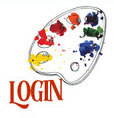Stats
Love Given: 0
Posts: 0
Badges
Category: default
Poptropica is an online adventure game that has captured the hearts of children, teenagers, and even adults since its launch in 2007. Developed by Pearson Education’s Family Education Network and created by Jeff Kinney, the author of Diary of a Wimpy Kid , Poptropica offers a unique blend of storytelling, puzzles, and platforming challenges. The game’s design encourages players to explore imaginative islands, interact with quirky characters, and solve mysteries while developing critical thinking skills. Over the years, Poptropica has evolved from a simple browser-based Flash game into a multi-platform experience available on mobile devices.
This article provides a deep dive into the game’s history, gameplay mechanics, islands, educational aspects, and continued relevance in 2025. Whether you are a nostalgic player returning after years or a newcomer curious about its charm, this guide will give you everything you need to know about Poptropica.
1. The Origins of Poptropica
The idea for Poptropica was born in the mid-2000s, when Jeff Kinney wanted to create an interactive virtual world for kids. Launched in September 2007, the game immediately stood out for its cartoony art style, safe online environment, and engaging quests. Initially targeted at children aged 6–15, Poptropica quickly gained a large user base worldwide, with millions of players exploring its islands every month.
In its early years, Poptropica was entirely free to play, supported by optional memberships that granted access to special costumes, early island access, and bonus quests. The game’s popularity surged thanks to word-of-mouth and its integration into school computer labs, where teachers found it to be both entertaining and educational.
2. How Poptropica Works
Poptropica is designed as a single-player adventure game with optional social features. Players create and customize their avatar, then travel to various islands—each functioning as a self-contained story with its own challenges. The gameplay focuses on:
Exploration : Moving through different locations, interacting with objects, and talking to NPCs (non-playable characters).
Puzzle-solving : Using clues, logic, and inventory items to progress.
Platforming : Navigating through obstacles, jumping across platforms, and avoiding hazards.
Story immersion : Each island has a unique plot, often inspired by history, mythology, or pop culture.
3. The Islands of Poptropica
Islands are the heart of the game, each with its own theme, story, and gameplay style. Some of the most beloved islands include:
3.1. Early Popular Islands
Early Poptropica Island – The very first island, focusing on helping the original settlers recover their stolen items.
Shark Tooth Island – A tropical mystery involving a hungry shark terrorizing villagers.
Time Tangled Island – A time-traveling adventure where players must fix historical events.
Spy Island – A spy thriller involving secret agents and villainous plots.
Super Power Island – A superhero-themed mission to capture escaped supervillains.
3.2. Fan-Favorite Storylines
Mythology Island – Players face off against Greek gods in a quest inspired by ancient myths.
Skullduggery Island – A pirate-themed treasure hunt across a vast ocean.
Ghost Story Island – A spooky mystery in a haunted town.
Red Dragon Island – Based on Magic Tree House , blending feudal Japan with time travel.
4. Memberships and Monetization
While Poptropica began as a completely free game, memberships were introduced to support ongoing development. Memberships provided benefits such as:
Early access to new islands.
Exclusive costumes and items.
Special mini-quests unavailable to free players.
However, core gameplay and most islands remained free, ensuring accessibility for all players.
5. Poptropica’s Educational Value
Although designed as entertainment, Poptropica has strong educational elements:
History and Culture – Many islands teach about historical events (e.g., Time Tangled Island covers famous moments in history).
Problem-Solving Skills – Players must use logic and deductive reasoning.
Reading and Comprehension – Story-driven dialogue encourages reading.
Safe Online Interaction – Limited, pre-scripted chat keeps the game safe for younger audiences.
This made it a popular choice in schools, where teachers used it as a reward activity that still stimulated students’ minds.
6. The Flash Shutdown and Game Preservation
A major turning point came in December 2020 when Adobe officially discontinued Flash Player. Because Poptropica was built entirely on Flash, this meant the original game could no longer be played in web browsers without special preservation tools.
To address this, the developers:
Released a mobile app for iOS and Android.
Ported selected islands to HTML5 so they could run without Flash.
Launched the Poptropica Worlds spin-off in 2017 (later discontinued due to low player engagement).
Still, many older islands remain unavailable today, sparking nostalgia campaigns among veteran players who hope to see them restored.
7. Poptropica in the Modern Era (2025)
Even in 2025, Poptropica maintains a loyal community. Its continued appeal lies in:
Nostalgia – Many adults return to relive their childhood memories.
Family-friendly gameplay – Parents trust it as a safe online game for kids.
Regular updates – New costumes, special events, and occasional island re-releases keep the game fresh.
The game’s active fanbase also thrives on social media, sharing speedruns, fan art, and island guides.
8. Tips and Tricks for New Players
For those starting Poptropica today, here are some beginner tips:
Explore every corner – Islands are full of hidden items and clues.
Talk to all NPCs – They often give hints or quest objectives.
Use the inventory wisely – Some items are only useful in specific situations.
Take notes – Writing down clues can help in more complex islands.
Replay islands – You might find hidden details you missed the first time.
9. The Cultural Impact of Poptropica
Poptropica’s influence extends beyond the game itself. It has inspired:
Book series – Including Poptropica: Mystery of the Map .
Merchandise – Toys, clothing, and posters.
Fan creations – Thousands of YouTube walkthroughs, fan comics, and community blogs.
For many players, Poptropica was their first introduction to online games, problem-solving adventures, and interactive storytelling.
10. The Future of Poptropica
Looking ahead, Poptropica faces both opportunities and challenges. The main goal is preserving its classic islands while continuing to create new content that appeals to both old fans and younger players. Possible future developments include:
A complete HTML5 conversion of all classic islands.
More mobile-focused updates.
Enhanced customization options for avatars.
Seasonal events tied to holidays and special occasions.
Conclusion
Poptropica is more than just an online game—it is a piece of internet history that shaped the childhood of millions. With its imaginative worlds, clever puzzles, and educational undertones, it stands as a testament to the power of games to entertain and inspire. Even in 2025, it remains a charming destination for adventurers young and old, proving that a well-crafted story-driven game can stand the test of time.












